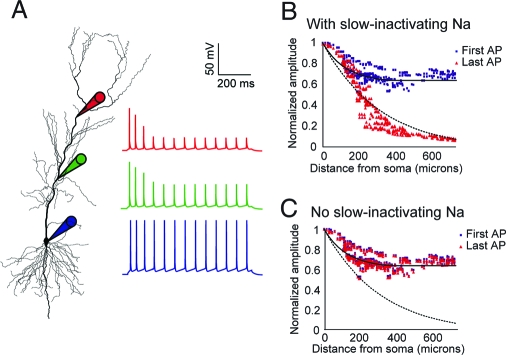Fig. 4.
Compartmental simulation using the ion-channel model. The optimal model was incorporated into current-clamp simulations to examine the distance-varying degree of activity-dependent attenuation of a train of backpropagating action potentials (bAPs). (A) Morphology of reconstructed CA1 pyramidal neuron showing attenuation of the bAP train at the soma and two different apical dendritic locations. (B) Normalized amplitudes of the first and last spike in a train of bAPs at various locations throughout the dendritic tree, in a simulation with a mixture of fast-only and slow-inactivating sodium channels. The fraction of total sodium conductance contributed by the slow-inactivating type is 100% in the distal dendrites and decreases linearly with distance to 0% in the soma. The somatic current injection was 0.15 nA for 800 ms. The solid and dashed lines represent fits of the experimental data for the first and last APs respectively, extrapolated from data (27). (C) Same as B, but using only sodium conductance with fast inactivation.

